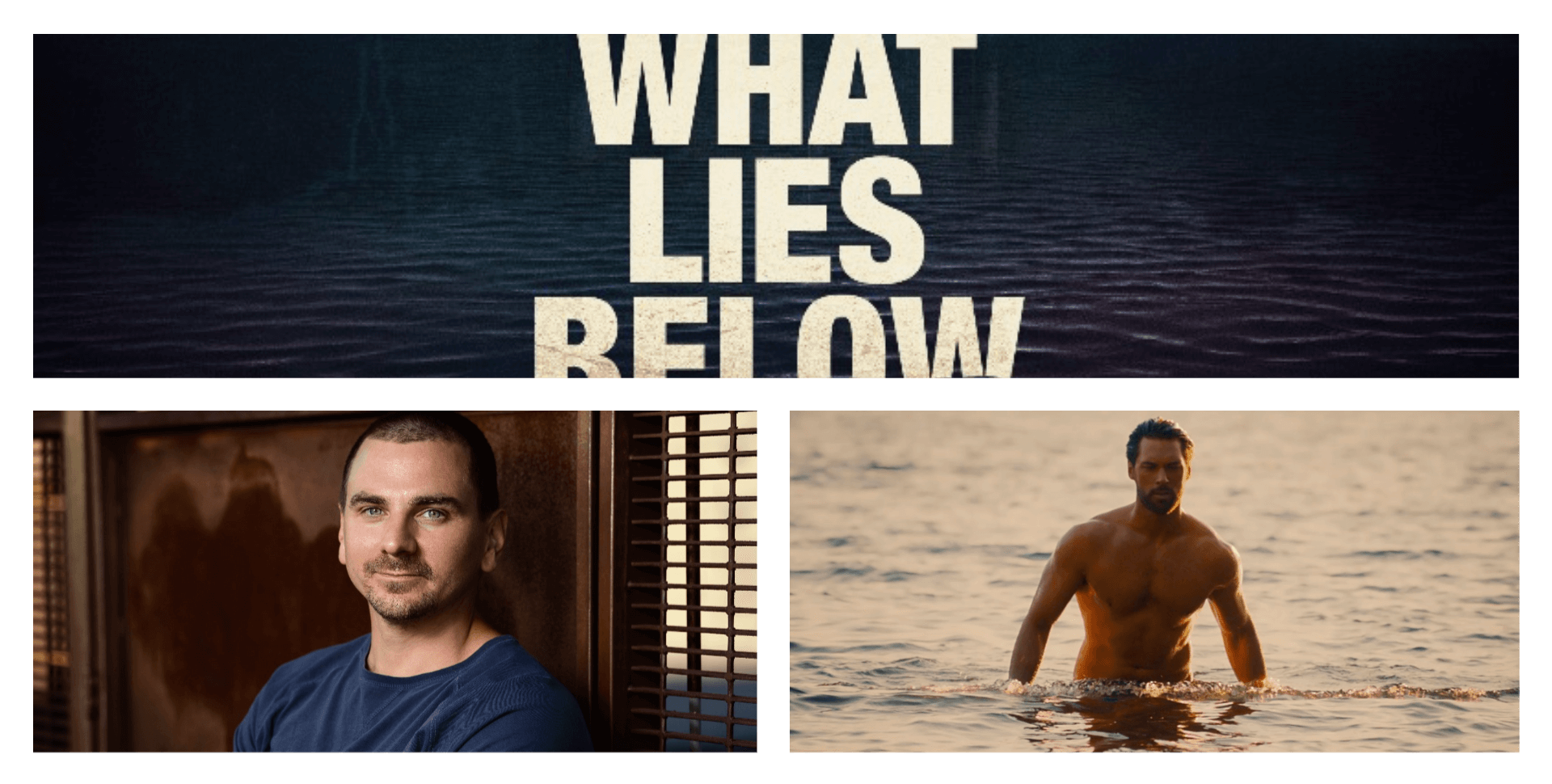What Lies Below follows the story of sixteen-year-old girl Liberty (Ema Horvath,) who returns from school camp to find her mom (Mena Suvari) in a committed relationship with a mysterious new man (Trey Tucker) - whose intelligence, attractiveness, and charm come off as eerily unnatural. Braden R. Duemmler, the writer and director of What Lies Below described his experience working on the horror/mystery/science-fiction film in the following interview with Borrowing Tape. What Lies Below is now available to watch via On Demand and Digital.
Watch What Lies Below via Amazon
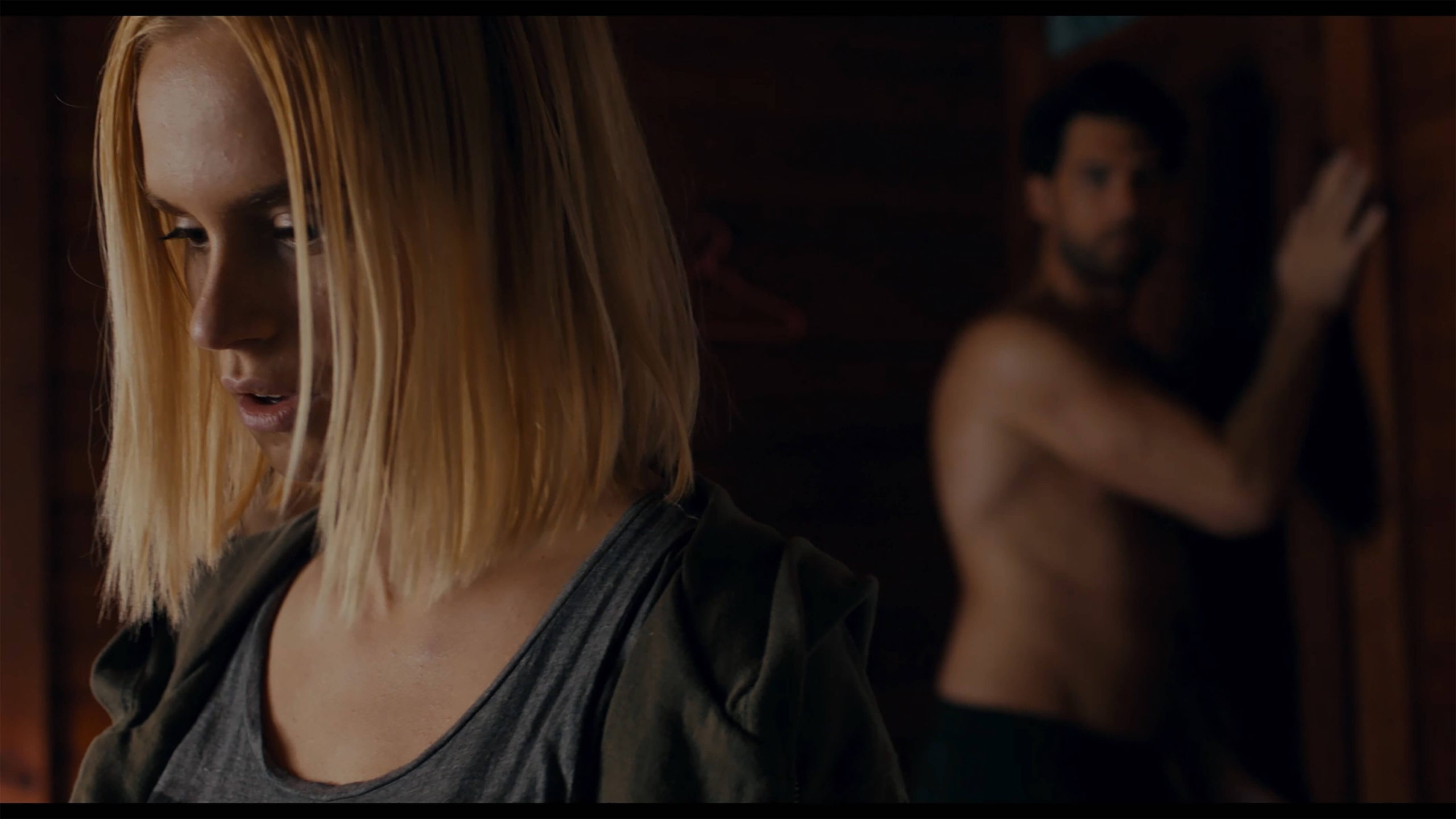
Photos courtesy of Vertical Entertainment
What was your inspiration for writing the "What Lies Below" screenplay?
Hello Jez! Thanks for including our film on Borrowing Tape.
What Lies Below is the synthesis of two ideas.
The first was an image in my head of a beam of light coming down from the sky and blasting into a person’s chest. That led me to ask: what is the light? Where does it come from? How does it change them? And finally,… who is watching?
That last question led me to a relationship of my past. When I was 5 years old, I experienced my first ever crush when I met my future stepmother, Sandy, for the first time! Looking back on my misguided childhood affection and my innocent flirtations (as Sandy teasingly played along) feels nostalgic now, but might skew inappropriate if the roles were reversed; in other words, if I was a little girl and Sandy was a man. That dynamic, as well as the light (which eventually evolved into the light in the lake), are the foundation of the story and the inspiration that led me down the rabbit hole of creepiness and horror.
Did you have a certain actor/s in mind to portray the characters? What was the casting process like for the film?
In the original draft, Michelle (the mother) was a redhead. Obviously, when we cast Mena I changed the script to accommodate her blond hair and I was happy to do so because she is such an incredible talent with a wealth of experience and knowledge. In my wildest dreams, I did not expect to cast someone as accomplished as Ms. Suvari, but when we did, everything elevated.
To a certain degree, when filmmakers are starting out, they are constantly looking for the stamp of approval; for someone on the “inside” to believe in you and support you and say “this person/script is good!.” Mena was that person for me and our project. After she came on, the floodgates opened and our Casting Director, Katrina Wandel George (who did an amazing job to attract Mena in the first place), was flooded with submissions and audition tapes.
Haskiri was the last cast member we found through that audition process. I immediately gravitated to her because she had a fire in her belly that was so critical to Marley’s character. I still recall a particular shot where I had to help Haskiri hold a very difficult position (we’ll have to leave it at that because I don’t want to give too much away), by grabbing her hips. Of course, I wanted to be respectful of her boundaries and didn’t want to grab her too tightly, but eventually, Haskiri turned around and said, “Brad, it’s fine; just grab me!” Like Marley, Haskiri was blunt, outspoken, and viciously dedicated and I saw that shine through whenever she performed.
Trey was another standout from the casting process. I remember his audition so clearly because he had this incredible penchant for expanding the depth of the material. He made lines that weren’t creepy, completely sinister and actions that were rudimentary became dynamic. Trey’s creativity continued onset and although we maintained our game-plan, we always afforded ourselves extra takes for any and all ideas.
In addition to that boldness, I found Trey possessed incredible control over his facilities as a performer. I knew that control would be intrinsic to our shoot because when first sharing the script, I found readers would react in extremely varying degrees to the same subtleties on the page. So, I had to decide what would be the best way to maintain a bit of control over a viewing experience that may arouse very divergent reactions. Since we could never be sure how an audience would react to an edit, I felt I needed an actor who could give me plenty of options and variations of the text, so I could alter and adjust the edit accordingly. So, in moments like the shoulder rub in the dining room, for instance, Trey and I were able to create a “creep barometer” and Trey would literally dial the creep up or down depending on the take. In many cases, with our limited time, we would just run a series where Trey would perform the action and I would simply say 1, 3, 6, or 10 to give us the different degrees of John Smith’s creepiness. Having those options in the edit was an unsung hero of the film and allowed us to control the viewer’s expectations throughout the story.
Ema was another incredible talent we were fortunate to find through the audition process. I still remember being so intrigued by her tape that I had to share it with a friend. The friend said, “she has a real Jack Nicholson quality to her” to which I replied… “ahhh… What?” That’s when he explained, “she’s either completely crazy or a genius.” It didn’t take long on set for me to realize the latter was true. Ema is incredibly cerebral and calm when she works. I’m usually pacing in the hall, staring at the ground, while she’s swaying in her makeup chair with a similarly fixated gaze. Between every setup she is in her head, thinking about the moment, the scene, the beat. We would talk and prepare, and she would internalize every note, and then once I said action it would explode in front of my eyes in the most mesmerizing ways. Her presence is so strong and captivating that she can make the subtlest shift in her look or her eyes or her smile and it will feel like something completely fresh and raw. It was incredible to watch her command and her ability to ground Libby very much anchored the film through what is a very turbulent and twisting plot. I’m so thankful for her and her talent. She is the star of our story.
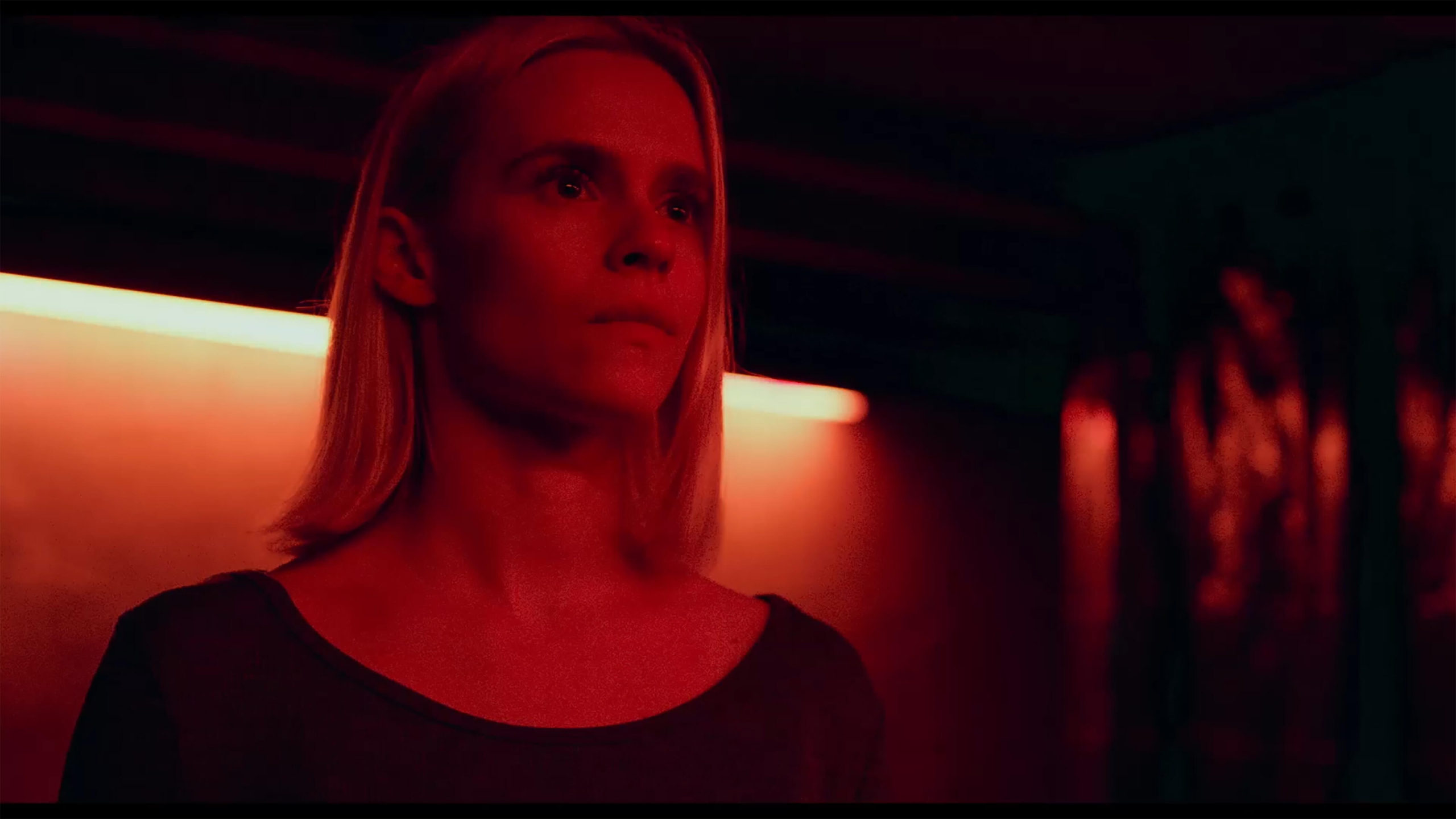
Let's talk about the ending - that was pretty unexpected. Did you start with the conclusion first, or was it organically written? What can you tell us about what happens to Liberty and Michelle?
Ha! I’m glad it’s unexpected. That is so much more fun, right? I would encourage anyone who is surprised by the ending to re-watch the film with it in mind. At its core, What Lies Below is a mystery and there are clues littered throughout the film that culminates in those final scenes and that last shot. I fear I’m teetering on a tight rope here between cryptic and lucid so I’ll just say this: the final scene was one of the earliest shots in my head. For me, it answers the who, what, where, and why of our mystery. Part of the why, for instance, is distinguished by a physical trait (that I mentioned earlier) shared by all the subjects in the shot. That trait influenced our casting, our makeup, and much of our dialogue. But, it only becomes fully evident in that final shot. Another element that people should look for in a second viewing – water. It is so important to our story, it’s like oxygen (at least for John Smith).
I won’t fool you with any hopes for Michelle. As for Liberty, I can say that the opening shot of the film is a sister to the final shot. The first is coming down, the final is going up. I hope you don’t mind if I leave it at that. I love fan theories and it’s one of the reasons I tend to write ambiguous endings.
How did you approach the directing process for 'What Lies Below'?
As I’m sure many writer/directors do, I direct the film as I write it. I have the shots, the colors, the performances in my head as I etch them into the blank page for the very first time. While having a clear vision is definitely an asset, I never want it to limit me from engaging in new ideas. So, I always approach the actual production open for collaboration and input from the actors/actresses and crew. As the writer/director, who has lived with the idea and script for far longer than you’d like to admit, you have, more often than not, thought of and dissected everything. But every now and then you’re surprised and intrigued by something new and that’s an incredible moment: when an actor shocks you with a certain delivery or the Art Department interprets a description in a very unique way. Those are the moments that elevate films and I strive to be open to them despite how distinct the story is in my head.
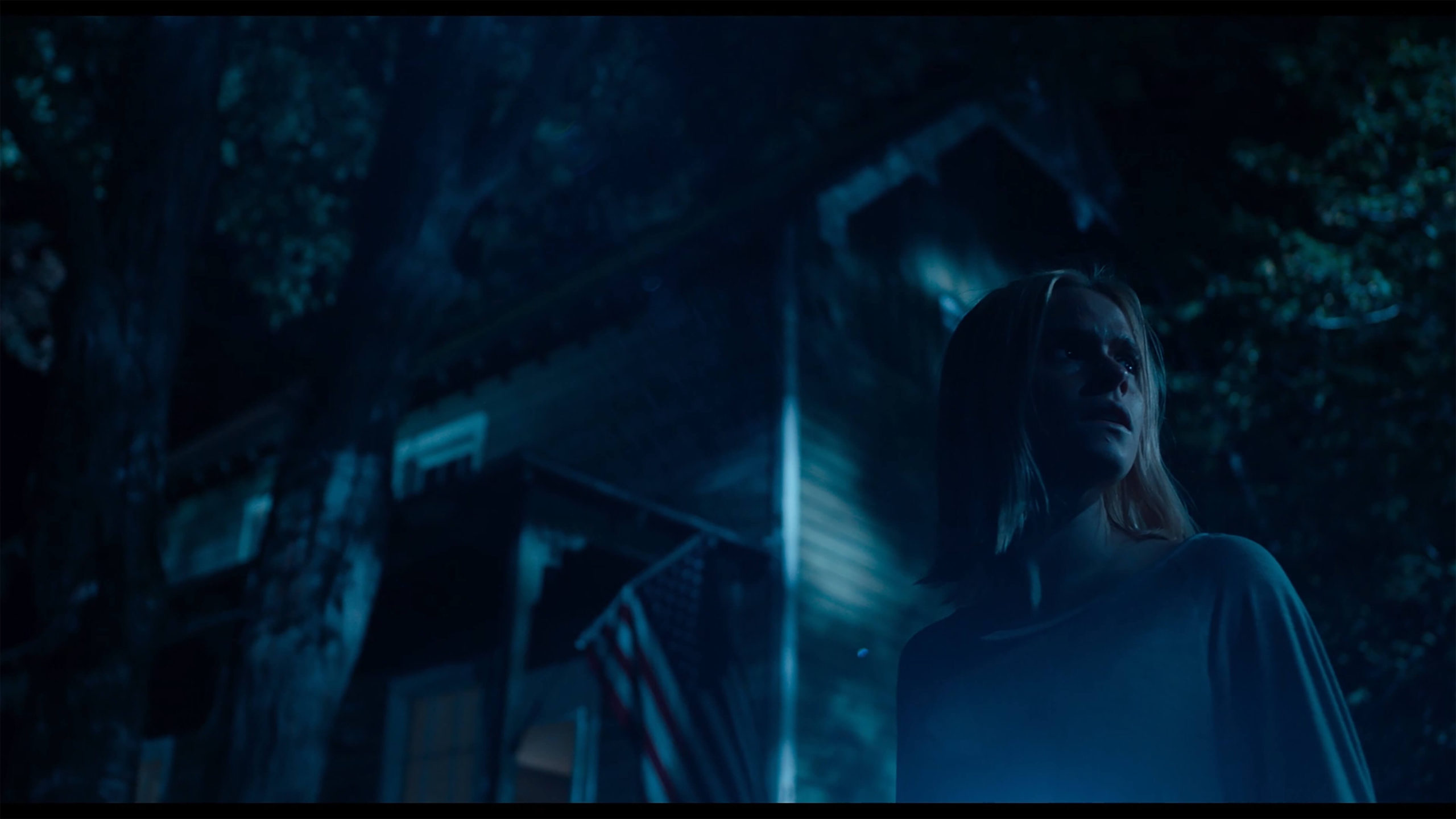
What were your favorite scenes in What Lies Below — while directing and in the final cut of the film? Where was the movie filmed, and how long did production last?
I love so many scenes because they become your babies, but if I had to choose one it would be the boat scene. That scene was actually inspired by the first time my Dad had “the talk” with me. I was 13 years old (already well aware of sex) and I was trapped in this small inflatable raft, touching legs with my 6 foot 5-inch father, who proceeded to give me a detailed description of “when two people love one another” and so on… Needless to say, I attempted to translate that awkwardness into this story by fusing it with a major shift in our characters’ trajectories. I still remember the table read of the first draft; there was an audible gasp when we read that scene and someone blurted out, “Holy Crap!” and that’s when I knew we had something.
As for our Production, we shot the film in Upstate NY, near Lake George, thanks to the Adirondack Film Commission, led by Andrew Meader. I grew up going to Lake George for summer vacations with my Mom and shooting up there made me fall in love with the area all over again.
Our shoot was scheduled for 20 days, but we only shot 19, plus one pickup day back in Los Angeles. Like all films, the shoot was a battle, but we got through it and we’re all proud of what we accomplished.
What role did VFX play in the production of What Lies Below?
VFX was more of a pleasant surprise than expectation. We were a very low budget production, so we had to do our best to keep costs down. However, our Producer Abel Vang had a great relationship with Tunnel Post from his previous film and when he shared the film with them, they agreed to work on the project despite our low budget because they loved the film and wanted Sci-fi on their reel. In short, we lucked out. Between Tunnel and their sister company 22 Dogs, they brought the film to an entirely new level and even added a great Easter egg to the opening shot
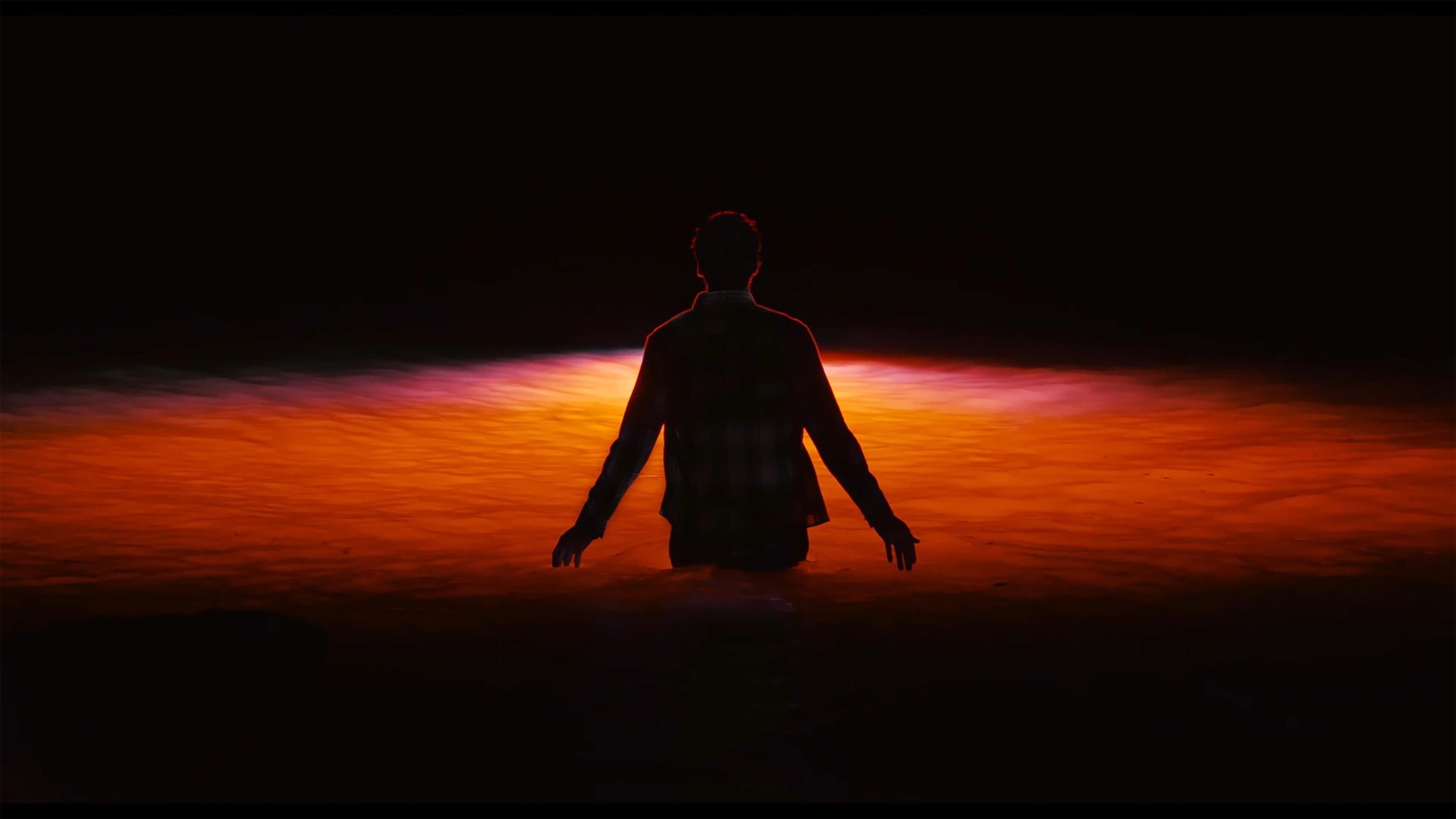
How did you find the experience of working with Cinematographer Jimmy Jung Lu?
Jimmy is like a brother to me. I love him dearly and value his friendship as much as his collaboration. We have a very unique working relationship simply because we are so close. As I mentioned before, I tend to be very hands-on as a director from the shots, to the colors, to the settings and Jimmy appreciates that and works with me to elevate those visuals because he has an incredible ability to find magic in the details. There are so many scenes where Jimmy is communicating to our audience through just the eye-lights in the actors’ pupils. That’s incredible to me. We challenge each other, we disagree, we argue, but in the end, the film is better off for it.
Which films/directors have influenced you as a filmmaker and your film, What Lies Below? What are some of your favorite films from the past decade?
I love doing research and watching reference films before I write a new script. For What Lies Below, I watched and was inspired by many including Tomas Alfredson’s Let the Right One In, Jonathan Glazer’s Under the Skin, and Andrea Arnold’s Fish Tank.
Personally, my recent favorites are Denis Villeneuve (especially Prisoners and Arrival), Jordan Peele (love Get Out), and Ari Aster (Midsommar haunted my soul). I also was fortunate enough to work with Sev Ohanian and Ryan Coogler earlier in my career and I feel I am constantly chasing them. They inspire me every day.
As for my background, as a director with a film theory education, I was introduced to so many incredible filmmakers and their work that undoubtedly, constantly, influence me (even if I can’t put my finger on exactly how) including Kubrick, Hitchcock, Fellini, Jean-Luc Godard, Agnès Varda, Werner Herzog, David Cronenberg, and Jane Campion.
Watch What Lies Below via Amazon
